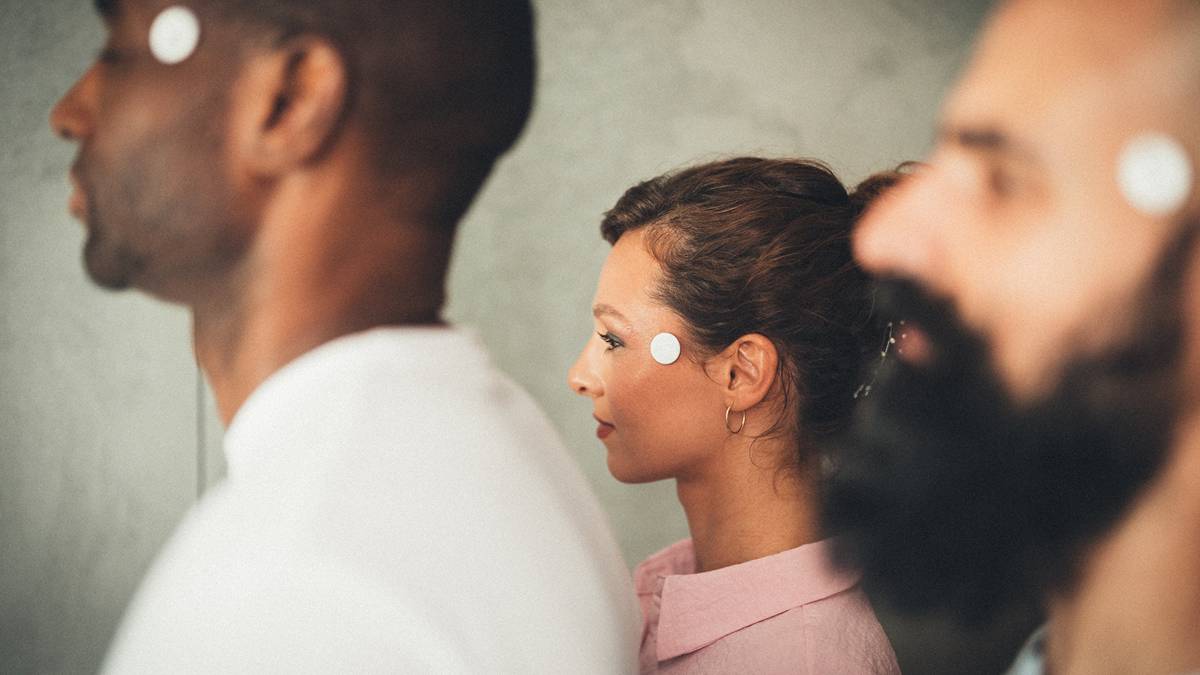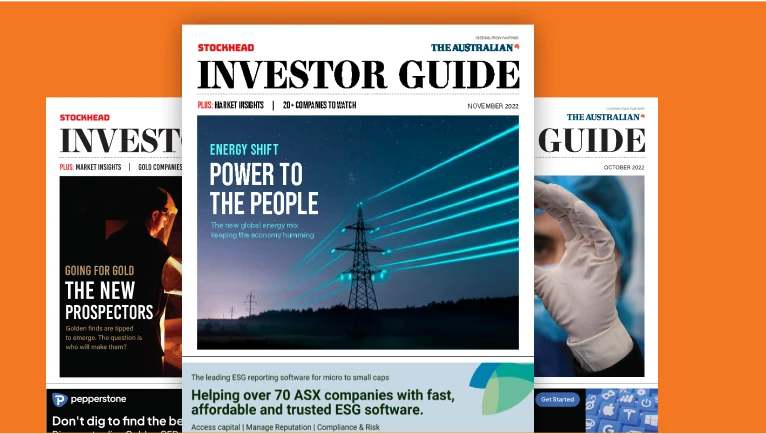Biocurious: Control Bionics says outwitting the world’s richest man is a no-brainer

The world's richest man is behind brain inserts to assist communications for people with disabilities. But honestly Elon, there are better and cheaper ways. Pic: Getty Images
- Elon Musk’s Neuralink has devised brain implants to assist the disabled to communicate, but Control Bionics already has an approved, non-invasive tool
- The company sees broader opportunities in sports performance and rehabilitation
- And it plans to bed down key partnerships on both sides of the business
Control Bionics (ASX:CBL) CEO Jeremy Steele is unfazed by humankind’s next frontier in medical science, courtesy of Tesla founder and 500-billion-dollar man Elon Musk.
The world’s richest person owns Neuralink, which has developed brain implants to enable individuals such as quadraplegics and paraplegics to control digital and physical tools through thought.
This is not Black Mirror stuff – this is in the present.
But the gizmos perform a similar function to Control Bionics’ long-approved augmentative and assistive communications (AAC) device, Neuronode.
Neuronode is a watch-like device to assist cognitive people with physical disabilities – notably sufferers of cerebral palsy or motor neuron disease – to perform everyday functions.
As Musk posted on X – which he owns, of course – 12 people have now received Neuralink chips, clocking up 15,000 hours of use.
Steele notes the Neuralinks cost US$100,000 and are not reimbursed, which make them the preserve of – well – the Elon Musks of the world.
“Our device works, it’s US Food and Drug Administration approved and has funding.
“We also have thousands of people using it.”
Strategy tweak
To be fair on Musk, the first guy to be implanted described the billionaire as a “cool dude”.
Steele adds that Musk is doing the broader sector a favour by highlighting the role of tech in providing such a valuable service.
In 2020 the FDA approved Neuronode, the company’s core wireless wearable device that detects minute signals sent from the brain to any skeletal muscle.
Neuronode captures these signals as electromyography (EMG) output.
Control Bionics is well down the commercialisation path but had a fancier market capitalisation when it listed just under five years ago – and was much less advanced.
Steele acknowledges the company has not fully realised the value of its impressive tech – and is tweaking its strategy to reward patient investors.
The first leg is moving from a retail sales model to a wholesaling approach, whereby the tech is embedded in other parties’ products.
Think of it as the ‘Intel Inside’ model.
The second is a move into sports and stroke rehabilitation and assisting able-bodied sportspeople literally to lift their game.
“It’s all about having people jump higher, run faster and walk better,” Steele says.
Leaping into sports medicine
Steele dubs rehab and sports performance as “essentially the same use case, but at the different end of the spectrum.”
The company has developed Neurostrip, which deploys the Neuronode in miniaturised form.
“You might be an athlete wanting to get another 5-10% out of your muscle activations, or you are recovering from a cruciate ligament injury or hamstring tear, or from a stroke,” he says.
“Opening up new motor neuron pathways from your brain to your muscle is a way of increasing activation.”
In late 2024 Control Bionics invested in Neurobounce, a US business specialising in neuromuscular rehabilitation and athletic optimisation.
Steele cites a basketballer in the Neurobounce program who gained 14 centimetres in his vertical jump – the difference between making a slam dunk or not.
“Athletes also almost always get injured, so how do you assess how they are ready to return to the field?”
The company’s Neurostrip revenue model involves clients buying the hardware, with the software available as a subscription service.
“It’s a powerful platform,” Steele says.
“We have collected the data for many years, allowing us to deliver something that meets the expectations of athletes and their trainers.”
The power of partnering
On the AAC side, Control Bionics emphasises developing distribution partnerships that add to other parties’ assistive technologies.
The company has inked smaller partnerships in the US. It’s currently in “deep negotiations” with a putative large scale (possibly global) distributor.
Management realises the company doesn’t have the firepower to go it alone.
In the US, Control Bionics has seven US salespeople.
Shall we name them? We won’t, but you get the drift.
The biggest AAC operator, Tobii has 150 reps.
But Tobii also doesn’t have a product like Neuronode, which makes them potential partners rather than rivals … or frenemies.
“Doing a partnership with someone like them gives us an ability to substitute retail revenue with wholesale revenue and still generate a great operating margin,” Steele says.
‘Yes, yes yes’ to rehab
On the rehab side, Control Bionics is working with US physical therapy chain Mountain Land, which runs 70 clinics across the US.
The company’s tech enables “measured” feedback tailored to the individual, beyond the subjective input.
“You go to one or two sessions with a physio, but you don’t really know if you’re getting any better.” Steele says.
In one case, a “weekend warrior” was back in action after two sessions, having carried an anterior cruciate ligament for two years.
Control Bionics also has an exclusive tie-up with Japan’s Stroke Lab, “with a host of customers in trial phase”.
Financial drivers
Control Bionics posted $6.1 million of revenue in the year to June 30 2025, up 15%, mainly from the US and almost entirely from Neuronode sales.
The company bundles Neuronode with other assistive products, such as a touch device or an eye-gaze camera.
The company only started selling Neurostrip in the June quarter, so revenue from that source should start flowing this financial year.
Last year the US Medicare gatekeepers assigned a reimbursement code to Neuronode, locking a rate of US$4300 ($6600) per device.
(Previously the company had been paid, but under a more complex protocol.)
Steele said cracking the code – formally known as an HCPCS – afforded the company the chance “to rethink the underlying value of the business and our technology.”
The US coverage spans 70% of the population.
Locally, the company derives about 90% of its revenues from the National Disability Insurance Scheme (NDIS).
This income tends to ebb and flow, with a consistent June quarter but a patchy start to the new financial year.
Steele says the NDIS was designed for clients with complex needs, such as cerebral palsy and MND sufferers.
“We should be grateful that, as a nation, we provide this support to people who by chance end up with these conditions.”
Only the beginning
Steele says Control Bionics hasn’t scratched the surface of its addressable market. That’s both in its traditional disabilities sector and the sports/rehab side.
In the US last year, the company sold around 250 Neuronodes.
“On our numbers … the total market is at least 5000 Neuronodes a year,” Steele says.
“It is a very significant market.
“By building out these wholesale partnerships, it’s an opportunity for us to significantly increase sales of our proprietary technology.”
Control Bionics lost $6.1 million last year. But Steele says these deficits should abate as revenue ramps up and its research and development spend decreases.
“We are not looking to do any more large-scale investment in R&D.” he says.
“We are looking to generate revenue from what we have already invested.”
Steele says while it’s tough for a microcap to win attention in the US market, the company has long-term supportive shareholders.
These include Nightingale Partners and Phoenix Development Fund, both with stakes of about 20%.
Founder Peter Ford has around 10%.
Steele believes Control Bionics’ lowly valuation will take care of itself.
“As we turn initial customers into contracts, we will generate considerable buzz around what our technology can do and this will result in a re-rating.”
Related Topics

UNLOCK INSIGHTS
Discover the untold stories of emerging ASX stocks.
Daily news and expert analysis, it's free to subscribe.
By proceeding, you confirm you understand that we handle personal information in accordance with our Privacy Policy.








